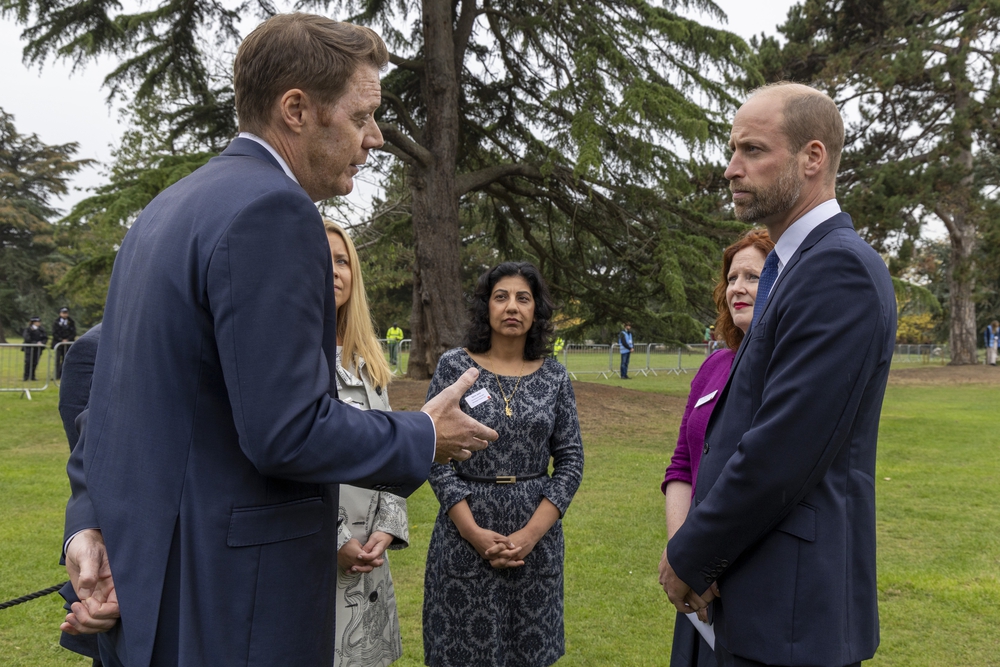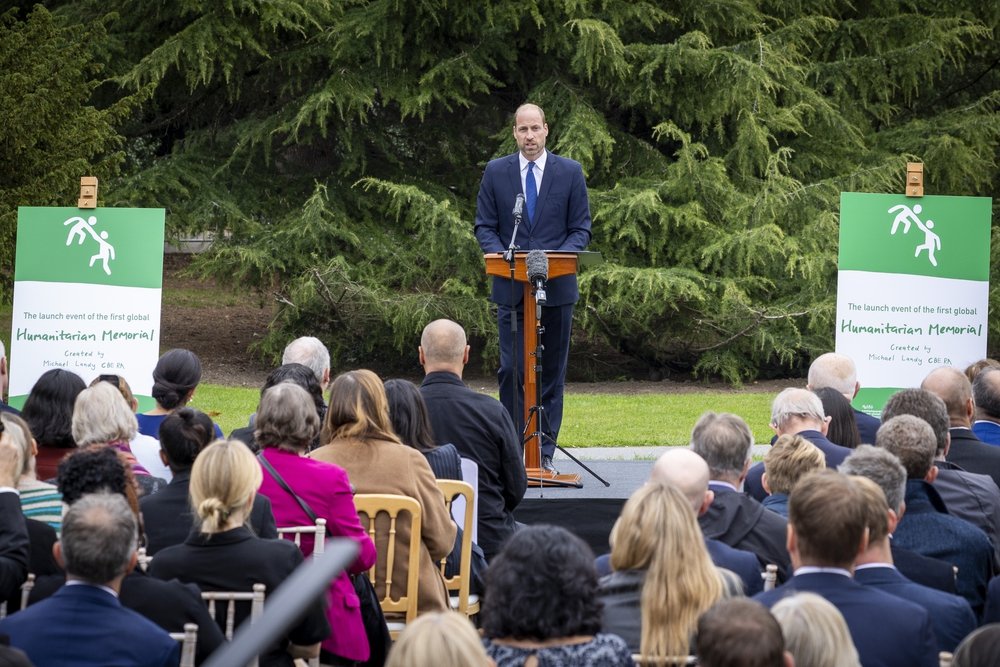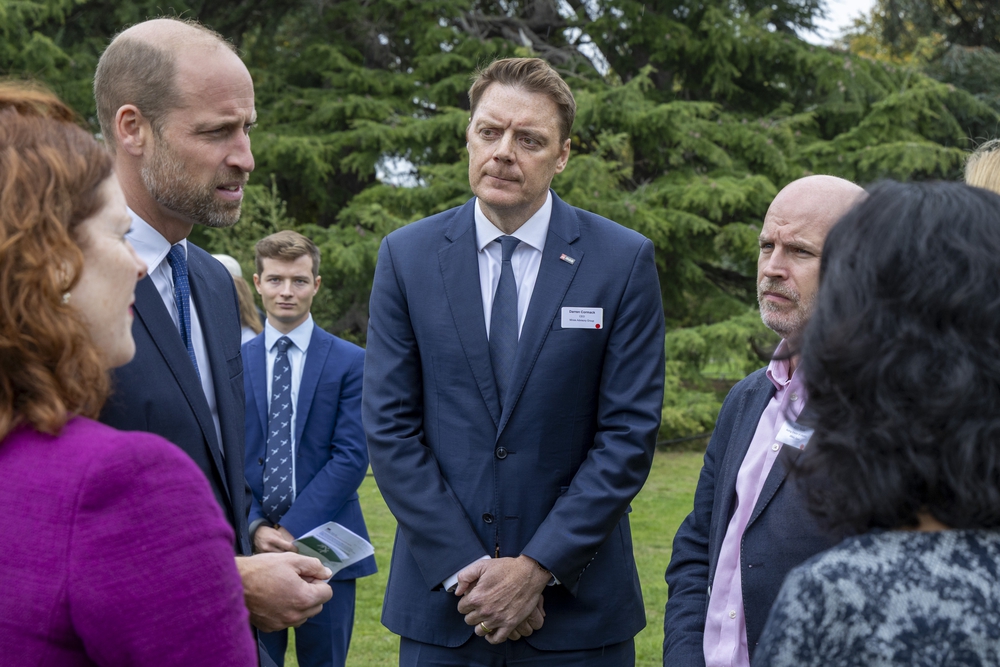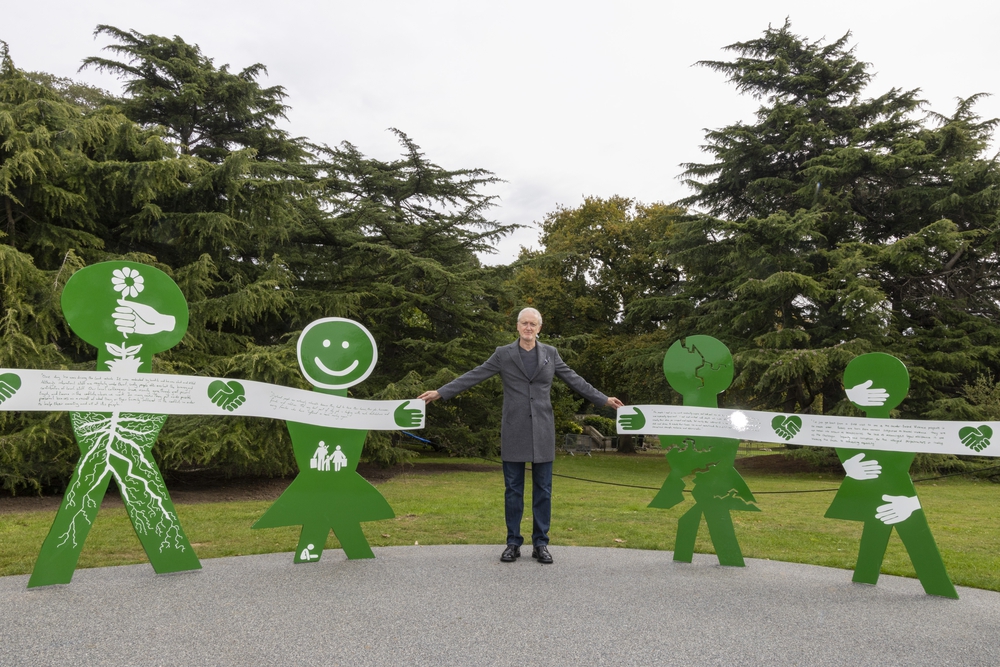Today, MAG Chief Executive Darren Cormack joined His Royal Highness The Prince of Wales at the official launch of the first global memorial dedicated to humanitarian aid workers, in Gunnersbury Park, West London.
The Humanitarian Memorial, created by renowned British artist Michael Landy CBE, honours all humanitarians who have been killed in service, while also celebrating those who continue to put their lives at risk to support people in crisis.

Darren was joined by Sam Rose, Acting Director of UNRWA Affairs in Gaza; Syma Jamil, humanitarian manager with Norwegian People’s Aid working on Sudan; and Sunny Lavelle, a nurse with Médecins Sans Frontières who has worked in Ethiopia. Together, they reflected on the challenges of delivering life-saving assistance in some of today’s most dangerous contexts, including Gaza and Ukraine.
The event holds particular significance for MAG. In 1996, MAG deminer Chris Howes and his interpreter, Houn Hourth, were kidnapped and killed by the Khmer Rouge while working to clear landmines in Cambodia. In March this year, a MAG explosive ordnance disposal expert on secondment to the United Nations Mine Action Service was one of five people to have been injured in an explosion at a UNOPS facility in Gaza, that also claimed the life of a UN worker. Their courage then and our colleagues’ courage across the world today, remains a guiding light for MAG’s mission to free communities from the devastating legacy of conflict.

Speaking after the event, Darren said: “Mine clearance is not just about removing explosives from the ground – it is about enabling people to live free from fear and to rebuild their futures. But our work, like that of all humanitarians, takes place against the backdrop of increasingly volatile conflicts where aid workers themselves are targeted. The loss of our colleague Chris Howes, killed while serving with MAG in Cambodia 1996, is a reminder of those risks and of the courage shown by humanitarians every day. This memorial is a vital recognition of the sacrifices made, and a powerful reminder of the humanitarian principles we all strive to uphold.”
The launch comes at a moment when aid workers face unprecedented dangers. According to humanitarian organisations, 2024 was the deadliest year on record for aid workers, with 383 killed across 27 countries. Of those, 97% were national staff – people serving their own communities. Since records began in 1997, when 39 deaths were documented, the annual toll has increased by 1000%.

The installation features a circle of 15 human-scale figures, arranged so that visitors can join hands to “complete the circle.” Each figure carries the story of a humanitarian or a person whose life was transformed by humanitarian assistance, with contributions from international organisations including Oxfam, Save the Children, and Care International. Visitors are invited to reflect on the values of humanity, independence, neutrality, and impartiality – principles at the core of humanitarian action.

Around the world and despite the risks, humanitarian aid workers continue to save lives, uphold human dignity, and provide hope for millions of people worldwide. The Humanitarian Memorial now provides a lasting tribute to their courage and humanity.
All images by Andy Aitchison





